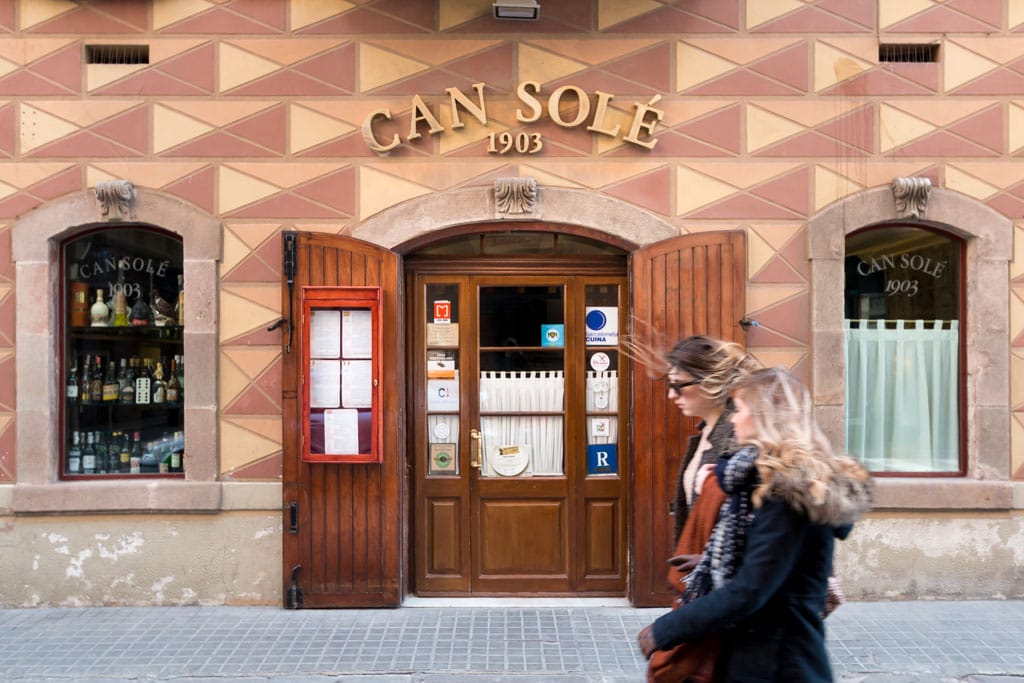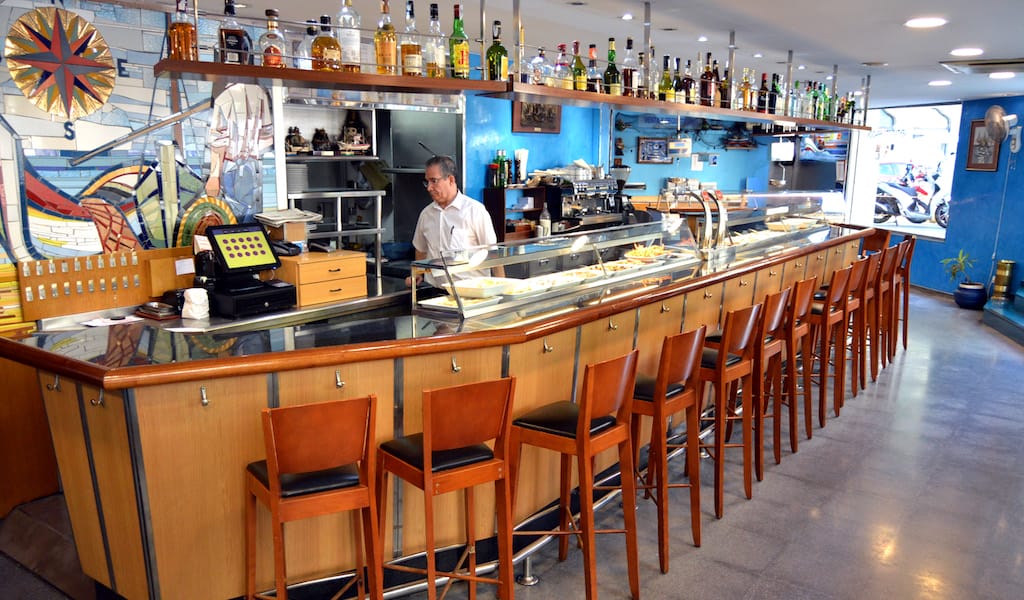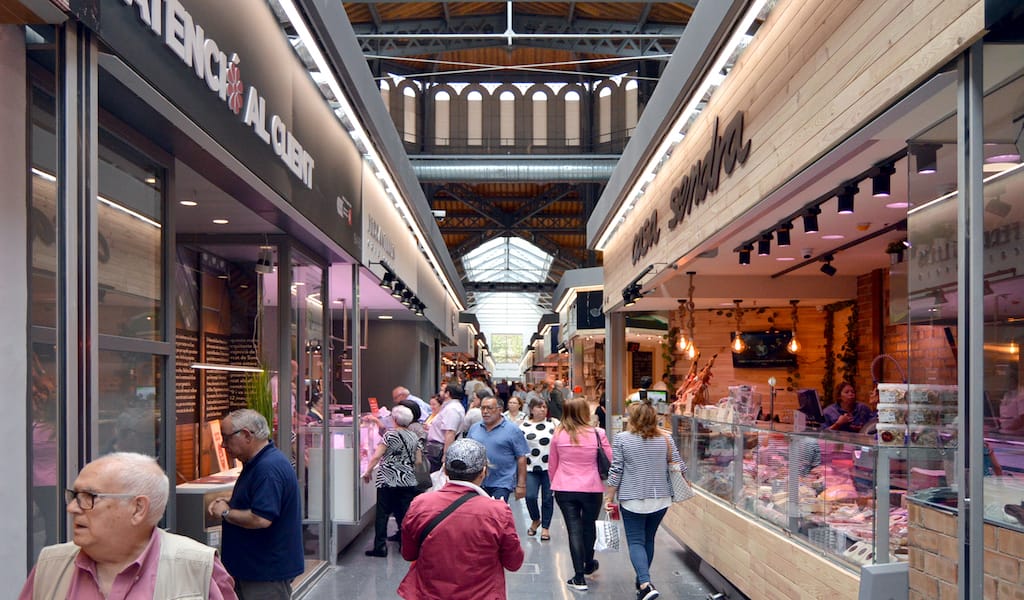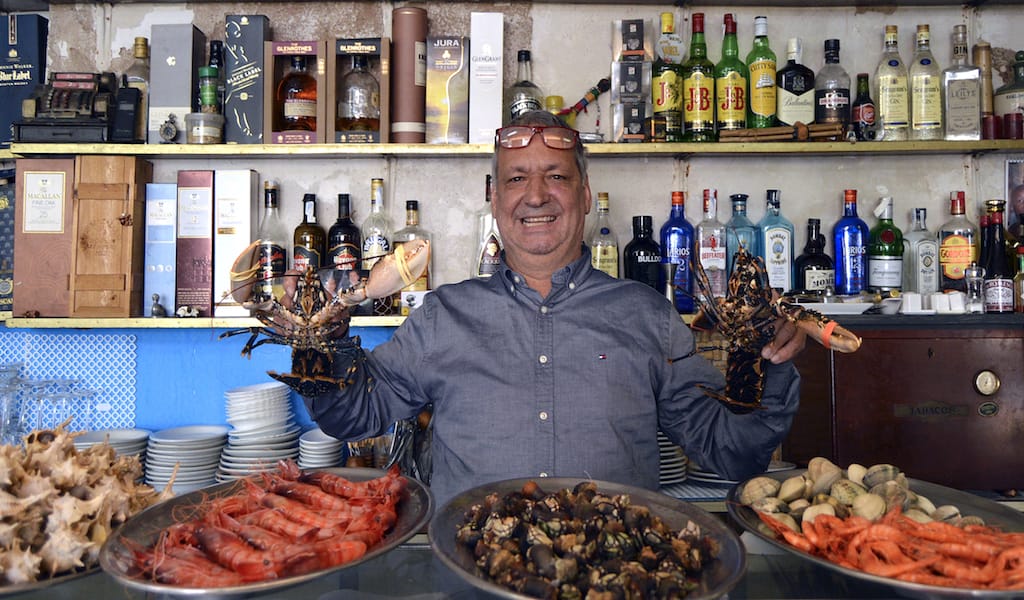Since the late 18th century, this quiet street corner in the salty seaside neighborhood of La Barceloneta has borne the name Can Solé. The long history of this tradition-steeped restaurant began with Gregorio Solé, owner of a shop of the same name, which sold soaps, oils and other sundries. In 1903, the space was sold to Josep Homs, who kept the name above the door and converted the shop into a restaurant, setting in motion a 113-year trajectory – from fisherman’s tavern of humble stature to famous culinary institution, offering some of the best classic Catalan cooking, rice dishes and seafood in Barcelona.
Back in 1903, upon returning to port, fishermen would bring their freshest fish to Can Solé and have it cooked on the spot. When you enter the restaurant, the bar sits immediately to your left, with its ancient marble rim and antique faucets – original fixtures that were once used to rinse the fishermen’s catch before it was brought to the kitchen. The stately grandfather clock on the wide stairway leading up to the sunny second-floor dining room also dates back to the founding years of the restaurant, as does the large, age-worn fresco depicting seaside life in the early 20th century at the top of the stairs. All throughout the downstairs dining room, framed photos of celebrities (famosos) who have visited Can Solé give guests a glimpse back at more than a century of Barcelona’s most celebrated citizens, from actors and musicians to politicians and football stars.
Now, Montse Rovirosa, who is in her 20s, has ushered Can Solé into the modern age while keeping the traditions of this beloved restaurant alive.

“My father had been coming here for years,” Ms. Rovirosa told us, as we sat in Can Solé’s elegant dining room. Diners talked in hushed tones as the white-aproned waiters strode in endless circles between the service counter and the bar. Our decadent lobster paella simmered in the restaurant’s open kitchen, bubbling up with sea-rich aromas, and the last, tender grilled razor clam on the plate before us begged to be snatched up.
Can Solé is a legendary meeting place in Barcelona, especially for fans of the Futbol Club Barcelona (the legendary soccer team that has been an intense, driving force in the sport for decades), as it was a popular choice for futbolistas and for those who hoped to rub shoulders with the Barcelona elite.
This legendary restaurant is now overseen by a jovial man named Josep María García. Serving as director and maître d’, María García possesses a mastery of tactful service and restaurant management. He is also a member of the Chaîne des Rôtisseurs (a Paris-based international association of gastronomy) and belongs to the wonderfully named Cofradía de l’Arròs del País Valencià (The Brotherhood of Valencian Rice, an organization dedicated to honoring the famous rice varieties of Valencia, which are the most essential ingredient in the region’s famous paellas). He’s a true gourmand, through and through, and transmits his pleasure and passion to every person who walks through the restaurant’s historic doors.
The food at Can Solé is an encyclopedia of classic Catalan cooking, with an obvious seafood-centric theme, and chef Mari Carmen Durán follows the seasons. In late winter/early spring, the artichokes of Catalonia flood into Barcelona, making appearances on nearly every restaurant menu in the city. At Can Solé a quite serious García told us that the artichokes with foie gras were something we “just had to order.” We acquiesced, and within minutes, a heaping plate of golden, paper-thin slices of crispy-fried artichoke hearts arrived at the table, blanketed in shaved foie gras mi cuit. This was soon followed by a platter of the famous trompetes de la mort amb xipirons (black trumpet mushrooms with baby squid), along with a plate of ultra-fresh navalles a la planxa, razor clams grilled and served plain to allow the flavor of the sea to be the star.
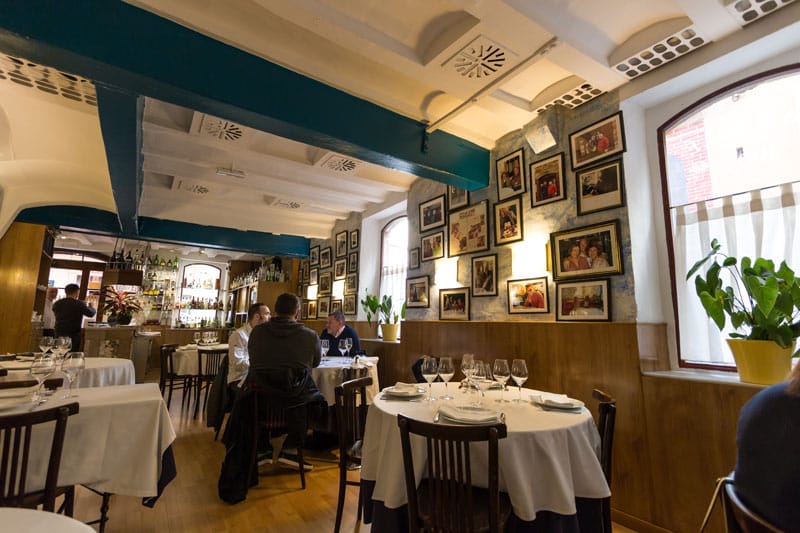
Can Solé has a multitude of rice dishes from which to choose – from the arròs negre (black rice, creamy and jet black due to the addition of squid ink when the broth is added to the rice and sofrito) to the restaurant’s signature dish, the arròs caldós Can Solé, which is more brothy than paella and cooked in a wide iron cassola (casserole). When ordering the arròs caldós, you choose your protein from an extensive list, be it sea cucumber, sea urchin, prawns, scallops, crab, or clams. On our visit, we ordered the luxurious lobster paella, which is all about texture, with perfectly tender rice and those delicious bits of socarrat (crispy rice grains) that become crusted around the edges of the pan. Paella is all about the rice and the broth, with the seafood or meat playing a supporting role, and the version here pays the utmost respect to tradition.
No authentic meal in Barcelona is complete without something sweet, and chocolate is the known vice of virtually every Barcelonés. Therefore, it only seemed fitting that we end our leisurely two-and-a-half-hour lunch at Can Solé with a “molten” cake of dark chocolate, baked in a little ceramic crock with a melted, white chocolate core. We made short work of the cake, and after a few strong shots of espresso and many goodbye kisses, we finally emerged onto the street sated and happy and headed home to join the rest of the city in a much needed mid-Sunday siesta.
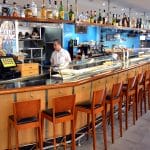 October 1, 2018 La Barca del Pescador
October 1, 2018 La Barca del Pescador
With almost 6,000 kilometers of coast (5,978 to be exact), Spain is the world’s second […] Posted in Barcelona June 4, 2018 Mercat de Sant Antoni
June 4, 2018 Mercat de Sant Antoni
“I still don’t know where the siphon bottles for the vermut are,” says an employee of […] Posted in Barcelona May 1, 2018 Cal Siscu
May 1, 2018 Cal Siscu
Despite the big wooden casks on the wall and the creaky shelves crowded with bottles […] Posted in Barcelona
Published on March 30, 2016
Related stories
October 1, 2018
BarcelonaWith almost 6,000 kilometers of coast (5,978 to be exact), Spain is the world’s second largest consumer of fish and seafood per resident (the first being, no surprise, Japan). Bathed by the cold Atlantic on one side and the warmer Mediterranean on the other, the country harbors a wide variety of habitats that have made…
June 4, 2018
Barcelona“I still don’t know where the siphon bottles for the vermut are,” says an employee of Marina, a small bar in the newly renovated Mercat de Sant Antoni. It’s clear as we’re walking around that the staff of the market’s few bars and its many vendors are still settling in and adapting to their brand…
Discover Barcelona’s urban wine culture on our Bodega walk.
May 1, 2018
BarcelonaDespite the big wooden casks on the wall and the creaky shelves crowded with bottles behind the bar, wine is no longer king at Cal Siscu, an old bodega (wine store and tavern) in Hospitalet de Llobregat, a city located on the periphery of the Barcelona metropolitan area. The new ruler, who has deigned to…







































